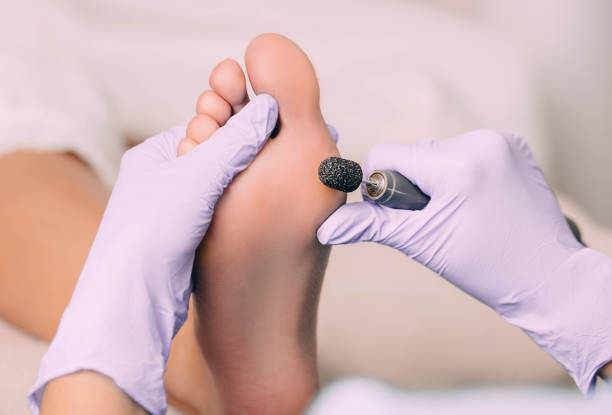 Say Goodbye to Bunions: Effective Treatment Options
Say Goodbye to Bunions: Effective Treatment Options
When the bones in your foot shift out of position, you can develop a bunion. A bunion is a deformity of the big toe that forms because the long metatarsal bone (the bone between your second toe and your first toe) gets caught in between the bones of your foot, forcing your toes to bend inward.
Over time, the joints become enlarged and inflamed. This may cause pain and make it difficult to walk. Medications, padding and changing your shoes can help.
Wearing shoes that are too tight around your feet can also increase the risk of developing a bunion. Avoid high heels that squeeze your toes together or that are narrow and short.
If you have a bunion, your doctor will do a physical exam and order an X-ray to determine the severity of the problem. If you have a severe bunion, your doctor may refer you to an orthopaedic surgeon for surgery.
The doctor can straighten the bones in your foot, bringing them back into alignment so that the bunion is less likely to get worse. The surgery usually results in a significant improvement in your symptoms and the way you walk.
A small number of people do not respond to conservative treatments and end up with a more permanent bunion, even after surgery. The most common symptom is that the joint at the base of the big toe becomes stiffer, which makes it more difficult to do things like roll your foot in a smooth heel-to-toe movement.
Other symptoms include swollen and inflamed joints, especially the bunion. The swelling and inflammation can be reduced by using an ice pack several times a day or applying a nonmedicated foot bunion Adelaide pad.
In some cases, a foot and ankle specialist may prescribe shoe inserts or orthotic devices to position the foot correctly. These can be prescription orthotic devices or over-the-counter arch supports.
Protecting the bunion with a moleskin or gel-filled pad, available at drug stores, can help keep the bunion from getting worse. Under a doctor’s guidance, you can use a splint at night to hold the bunion straight and ease discomfort.
Taking nonsteroidal anti-inflammatory drugs, such as ibuprofen or aspirin, can also reduce discomfort. Warm soaks, ice packs, Whirlpool, ultrasound and massage can be helpful as well.
Exercises can help retrain the foot muscles to move in their natural direction and prevent further damage. Walking barefoot, stretching and using toe spacers are all exercises that can be beneficial for reducing or slowing the progression of a foot bunion.
Other therapies include heat therapy, icing and a splint at night to relieve pressure on the bunion and ease discomfort. Cortisone injections can reduce pain and swell but have some side effects.
Minimally invasive bunion surgery has become more popular in recent years. This procedure, which uses a burr instead of a saw to cut the bone, has some significant advantages over traditional bunion surgery.